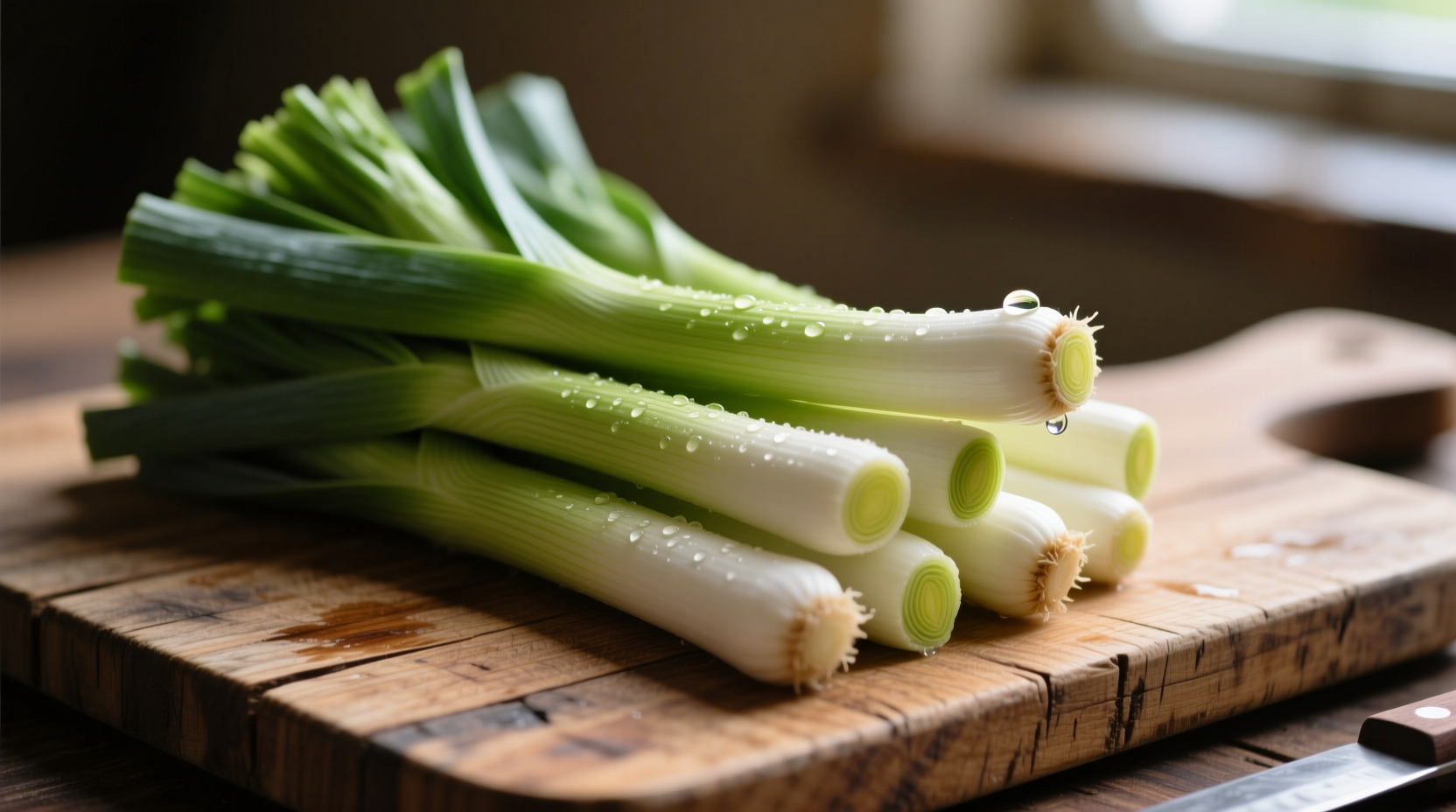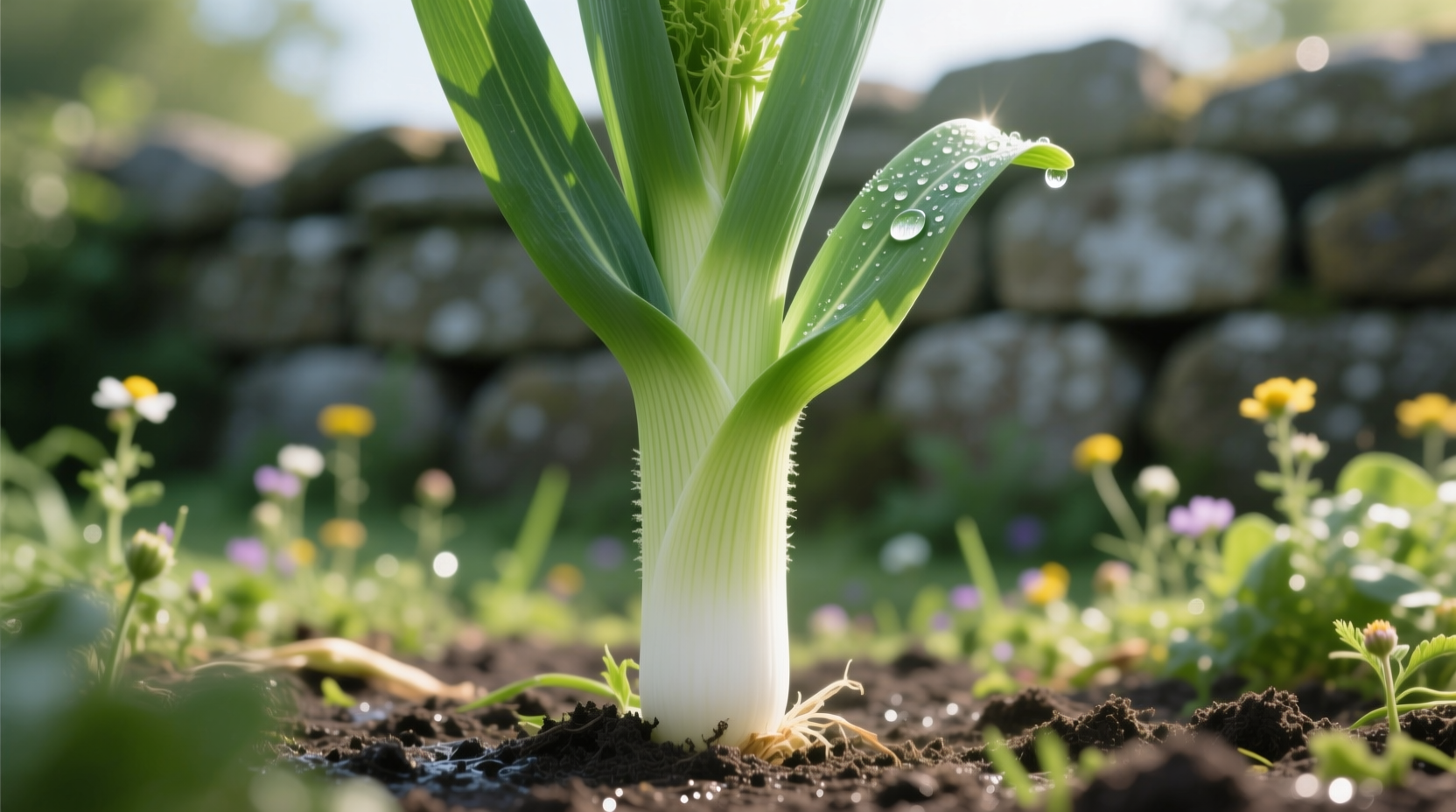What Exactly Are Leeks?
Often mistaken for oversized scallions, leeks (Allium ampeloprasum) represent one of the oldest cultivated vegetables with origins tracing back to the Middle East. Unlike their pungent onion cousins, leeks develop a sweet, subtle flavor when cooked properly. The edible portion consists of the white and light green stalks, while the dark green leaves typically serve as flavor bases for stocks due to their fibrous texture.
| Vegetable | Flavor Profile | Edible Parts | Best Cooking Methods |
|---|---|---|---|
| Leeks | Mild, sweet when cooked | White/light green stalks | Sautéing, braising, roasting |
| Green Onions | Sharp, pungent | White root, green stalks | Raw garnish, quick stir-fry |
| Shallots | Sweet, subtle garlic notes | Entire bulb | Raw in dressings, slow roasting |
Historical Journey of Leeks in Cuisine
Leeks have traveled through culinary history with remarkable staying power. Ancient Romans valued them for medicinal properties, while Welsh soldiers famously wore leeks into battle during the 7th century. This historical significance explains why the leek remains Wales' national emblem today. European monasteries preserved leek cultivation techniques through the Middle Ages, ensuring their place in French potage and British leek and potato soup.
How to Select the Perfect Leeks
When choosing leeks at your market, look for these key indicators of freshness:
- Firm, straight white bulbs without browning or soft spots
- Crisp, vibrant green leaves that haven't yellowed
- Minimal root growth at the base
- Smaller to medium diameter (about 1-2 inches) for optimal tenderness
Avoid leeks with flowering tops or excessive wilting, as these indicate age and potential toughness. Remember that larger leeks often have tougher outer layers requiring more preparation.
The Critical Cleaning Process
Proper cleaning separates amateur preparation from professional results. Leeks' layered structure traps soil between folds, making thorough cleaning essential. Follow this chef-approved method:
- Trim off roots and dark green tops (reserve for stock)
- Cut leek in half lengthwise from top to root
- Submerge in a large bowl of cold water
- Gently separate layers to release trapped dirt
- Swirl leeks in water to allow soil to settle
- Remove leeks (don't pour into colander which returns dirt)
- Pat dry before slicing

Nutritional Benefits Backed by Science
According to USDA FoodData Central, one cup of cooked leeks (89g) provides significant nutritional value:
- 54% of daily vitamin K needs for blood clotting and bone health
- 16% of vitamin A for vision and immune function
- Excellent source of manganese for metabolism regulation
- Contains prebiotic fibers supporting gut health
Unlike raw onions which can cause digestive discomfort for some, properly cooked leeks offer gentler digestion while delivering similar antioxidant benefits.
Professional Cooking Techniques
Master these chef-recommended methods to unlock leeks' full potential:
Sweating vs Sautéing
For foundational flavors in soups and sauces, sweat sliced leeks in butter over medium-low heat for 8-10 minutes until translucent but not browned. This draws out natural sweetness without caramelization. For heartier dishes, sauté over medium-high heat for golden edges that add complexity to potato dishes or quiches.
Whole Roasting Method
Preserve leeks' delicate structure by roasting whole:
- Trim roots and dark green portions
- Leave intact with root end slightly trimmed
- Toss with olive oil, salt, and pepper
- Roast at 400°F for 25-30 minutes until tender
- Serve with lemon-dill sauce as elegant side dish
Storage Secrets for Maximum Freshness
Extend leek shelf life with these professional storage techniques:
- Unwashed leeks last 10-14 days wrapped in damp paper towels inside perforated plastic bags in refrigerator crisper
- Pre-cleaned leeks should be stored submerged in water changed daily for up to 5 days
- Freeze blanched leeks for up to 6 months (not recommended for raw use but excellent in cooked dishes)
- Never store near ethylene-producing fruits like apples which accelerate spoilage
Common Mistakes to Avoid
Even experienced cooks make these critical errors with leeks:
- Skipping thorough cleaning - leads to gritty texture in finished dishes
- Discarding all green parts - dark greens make excellent stocks and should be reserved
- Overcooking - results in mushy texture rather than tender-crisp perfection
- Using high heat for foundational cooking - causes burning before proper flavor development
Simple Recipe Applications
Transform your cooking with these practical applications:
- Add sliced leeks to omelets during the last 2 minutes of cooking
- Substitute half the onions in French onion soup for more delicate flavor
- Create elegant side dish by braising leeks in chicken stock with thyme
- Blend cooked leeks into mashed potatoes for subtle flavor enhancement











 浙公网安备
33010002000092号
浙公网安备
33010002000092号 浙B2-20120091-4
浙B2-20120091-4